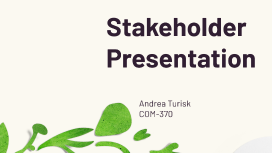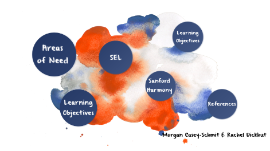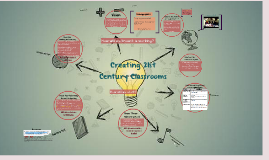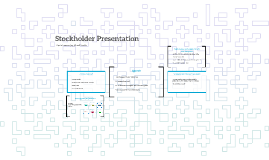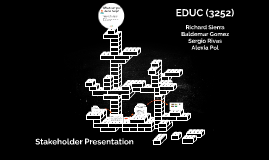Stakeholder Presentation
Transcript: Morgan Casey-Schmit & Rachel Dickhut Areas of Need Areas of Concern 52% identified friendships and social skills 54% identified that self-esteem was also an area of concern. Learning Objectives Learning Objectives Stakeholders Understand friendships and empathy, and the role social emotional learning (SEL) plays in the development of both Learn about the impact SEL can make on the positive development of students Discover ways to connect and help your student grow their SEL knowledge, skills, and attitudes. Social Emotional Learning SEL Children’s emotion regulation skills play a part in how well they from social relationships (Parent Toolkit, 2019). Promotes and develop self-awareness, social awareness, and relationship building (CASEL, 2018). Builds positive behaviors, increases school engagement and academic achievement (Morrison, Reilly, & Ross, 2019). Practicing positive problem solving and decision-making aids in critical thinking and tests (Miller, 2015) Sanford Harmony Activities are designed to Promote peer interaction Social inclusion Facilitating new friendships in individual classrooms and across the grade levels Increased students’ academic performance by 13% (Durlack, et al, 2011). M3: Sense of belonging in the school environment B-SS 2: Create positive and supportive relationships with other students B-SS 4: Demonstrate Empathy ASCA, 2019 Mindsets & Behaviors Learning Objectives Learn the benefits of having a supportive classroom environment and helping one another out Identify when and how to provide classmates with support and increase frequency Develop and commit to using strategies to create a socially inclusive environment Promote a classroom and school where all students feel supported by peers. Sanford Harmony, 2019 For Students Easily integrated with core curriculum (Morrison, Reilly, & Ross, 2019; Miller et al., 2017). Lesson activities flow right into the classroom and will only be effective when done in a classroom setting (e.g. I’ve Got Your Back). Related questions for teachers to ask and allow for whole class discussion. For Teachers Correlates with the school goals and meets student needs (Morrison, Reilly, & Ross, 2019) For Administration The emotional health your student is carefully entwined to the social and emotional characteristics of the environments where they live (National Scientific Council on the Developing Child, 2004) Parents get questions, ideas, and follow up topics to discuss with their student at home For Parents http://www.parenttoolkit.com/social-and-emotional-development/conversation-starter/self-awareness/supporting-social-and-emotional-development-in-kids-ages-8-11 https://vimeo.com/251353891 American School Counselor Association. (2019). Asca national model: a framework for school counseling programs. Alexandria, VA. Durlak, J., Dymnicki, A., Taylor, R., Weissberg, R., Schellinger, K. (2011). The impact of enhancing students’ social and emotional learning: A meta-analysis of school-based universal interventions. Child Development, 82(1), 405-432. Harmony (2019), Sanford Harmony at National University: Teaching Materials and Strategies, Sanford Harmony, La Jolla, CA, available at: www.sanfordharmony.org/teaching-materials-strategies/ Here's everything you need to know about elementary school friendships this year. (n.d.). Retrieved December 12, 2019, from http://www.parenttoolkit.com/social-and-emotional-development/advice/relationships/the-importance-of-peer-relationships-for-5-8-year-olds. Miller, C., Kochel, K., Wheeler, L., Updegraff, K., Fabes, R., Martin, C., Hanish, L. (2017). The efficacy of relationship building intervention in 5th grade. Journal of School Psychology, 61(1), 75-88. doi: 10.1016/j.jsp.2017.01.002. Miller, J. (2015, June 15). The Power of Parenting with Social and Emotional Learning. Retrieved November 17, 2019, from https://www.huffpost.com/entry/the-power-of-parenting-wi_b_7071208?fbclid=IwAR0vkvE9zvpmuBi9IDAy4KP8gb6KxfwDRyNXtfEp8vrVeJFOtzvKfjxs0bs. Morrison, J.R., Ross, S.M., Daniels, C.D. and Latham, G.C. (2017), “Evaluation study of the Sanford Harmony program at National University”, Center for Research and Reform in Education, Johns Hopkins University, Towson, MD. National Scientific Council on the Developing Child (2004). Children’s Emotional Development Is Built into the Architecture of Their Brains: Working Paper No. 2. Retrieved from www.developingchild.harvard.edu. References References








